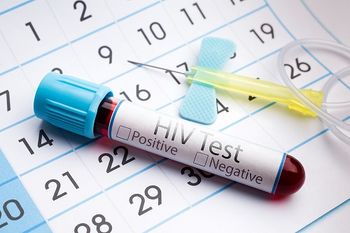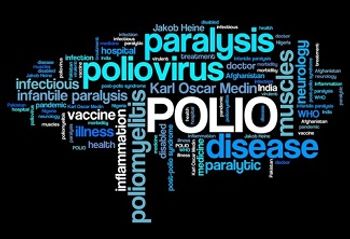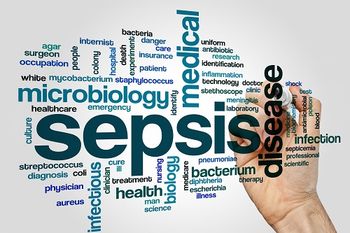
Increased stewardship may reduce administration of drugs to low birth-weight babies designed to prevent early-onset sepsis.
Brian P. Dunleavy has been covering health and medical research for more than 25 years, for United Press International and EverydayHealth.com, among other outlets. He is also the former editor of Infectious Disease Special Edition. In addition, he has written on other subjects for Biography.com, History.com, the Village Voice and amNewYork, among others. He holds a master’s degree from the University of Missouri School of Journalism.

Increased stewardship may reduce administration of drugs to low birth-weight babies designed to prevent early-onset sepsis.

The virus associated with the Middle East may or may not pose a threat to the United States, but researchers here are still working hard to find treatments and preventative vaccines.

With limited access to state-of-the-art technology in much of the world, the organization hopes the new list will draw attention to the importance of diagnostics.

With drug shortages and rising incidence of HIV/AIDS, the South American country may be on the verge of a public health crisis.

The tech mogul shares that world leaders need to prepare for the next pandemic—whatever the root cause—including plans for mobilizing military, health, and other resources while coordinating efforts with private industry.

Data from the Behavioral Risk Factor Surveillance System indicate two-thirds of transgender men and women have not been tested for HIV/AIDS.

Infections associated with the ongoing opioid epidemic in the United States apparently know no bounds.

In an era of in which everything is political—and politics is perhaps more polarized than ever before—Dr. Adams is advocating for what APHA Executive Director Georges Benjamin, MD, described as the “sensible middle.”

Although resistant strains have been reported sporadically, in recent years, there have been no reports of what an international team of researchers has described as “sustained transmission”—until now.

An analysis designed to assess infectious disease mortality in the United States between 1980 and 2014 revealed that the country has seen an increase in deaths caused by diarrheal diseases.

Based on current projections, antibiotic consumption could increase by as much as 200% by 2030.

Investigators from the Centers for Disease Control and Prevention have determined the incidence of carbapenem-resistant Acinetobacter baumannii and "the basic epidemiology” of infections caused by these isolates in 8 metro areas.

At present, multiple vaccine candidates are in various stages of research and development, including cabotegravir, which is currently in phase 3 trials, and vaccines based on broadly-neutralizing antibodies.

These landmark results are from a field study assessing the safety and efficacy of combination therapy with delamanid and bedaquiline in the treatment of drug-resistant tuberculosis.

High prescribing continues despite the fact that heavy use of these agents can facilitate the development of multidrug-resistant bacteria and tendon, muscle, joint, and central nervous system damage.

One agency estimates that at least 50% of all antibiotic prescriptions written in the United States do not fall under currently accepted practice guidelines.

Infectious disease specialists and public health professionals in search of a to-do list for 2018 need look no further.

The recent announcement that e-retailing giant Amazon, investment bank JP Morgan Chase, and multinational holding company Berkshire Hathaway are starting a health insurance company has incited mixed emotions among public health professionals.

Historically, postoperative pulmonary complications have been the most common serious adverse event following upper abdominal surgery, with incidence rates ranging from 10% to 50%.

A multinational team of investigators has revealed a link between conflict-induced displacement of people and the spread of HIV within Ukraine.

More than $2 billion was invested in research and development relevant to the issue of antimicrobial resistance in 2016 alone.

Analysis finds increased social spending was positively associated with population health measures in Canada at the provincial level.

Bill Gates always puts his money where his mouth is.

In a special supplement to the January 15th issue of Clinical Infectious Diseases, researchers from various institutions across the country shared the latest findings on the diagnosis and management of botulism and highlighted the need for greater clinical understanding of its symptoms and related complications.

Consumer interest in water that hasn’t been “treated, filtered, or processed in any way” is on the rise, and there are concerns that its consumption could result in the next public health crisis.

Could 2018 finally be the year polio is eliminated as a global health concern?

Herewith, 4 New Year’s resolutions for the infectious disease community—at least according to us here on the Public Health Watch.

Two recent federal government decisions and actions could put the public at increased risk for an infectious disease outbreak.

The Infectious Diseases Society of America’s (IDSA) decision not to endorse the 2016 Surviving Sepsis Campaign Guidelines comes from disagreement on the diagnosis and management of the microbial etiology of the disease.

The US Department of Health and Human Services Tick-Borne Disease Working Group held its first public meetings in Washington, DC, this week and it has already generated plenty of eye-grabbing headlines.